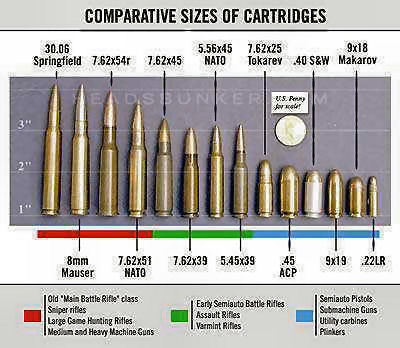The .30-06 Springfield
The .30-06 (pronouced "thirty-ought-six") rifle cartridge developed from the .30-03 cartridge and was brought out in 1906 by the Springfield Armory. The cartridge was designed as a military one for the Springfield 1903 rifle and it's development was also influenced by the German 7x57mm as well as 8x75 Mauser. Battle rifles chambered in .30-06 saw use in both world wars as well as Korea and limited use in Vietnam. Even after almost 100 years of constant development in the rifle and cartridge arenas teh .30-06 is still considered the best all-around cartridge for big game. The .30-06 is a large caliber which is large enough for most game but whose recoil can be handled by most shooters; the ballistics are excellent with a very flat trajectory for long-range work and sufficient accuracy for precision shooting. Typically this round generates 2700fps with a projectile weight of 150 grains. The U.S. Army replaced this .30-06 Springfield in 1954 with the 7.62x51 NATO basic, known commercially as '.308 Winchester
The .30-06 and the 7.62mm NATO bullets are essentially the same and have essentially identical ballistic performance. The case of the 7.62mm NATO is shorter, but the more modern propellants used makes up for it. The .30-06 was an obsolete military cartridge going into WW2, but we had large quantities of it and faced wartime manufacturing priorities. We might arguably have done better to have chosen the M1 Garand in the .276 Pederson for which it was originally chambered.
The eventual change to the NATO was to have a single rifle cartridge for the M14 and M60 to simplify logistics. While that did not prevent the adoption of the M16, we kept the 7.62mm NATO for our GPMGs.
Comparison of the AK-47 and M16
Bullet Ballistics


